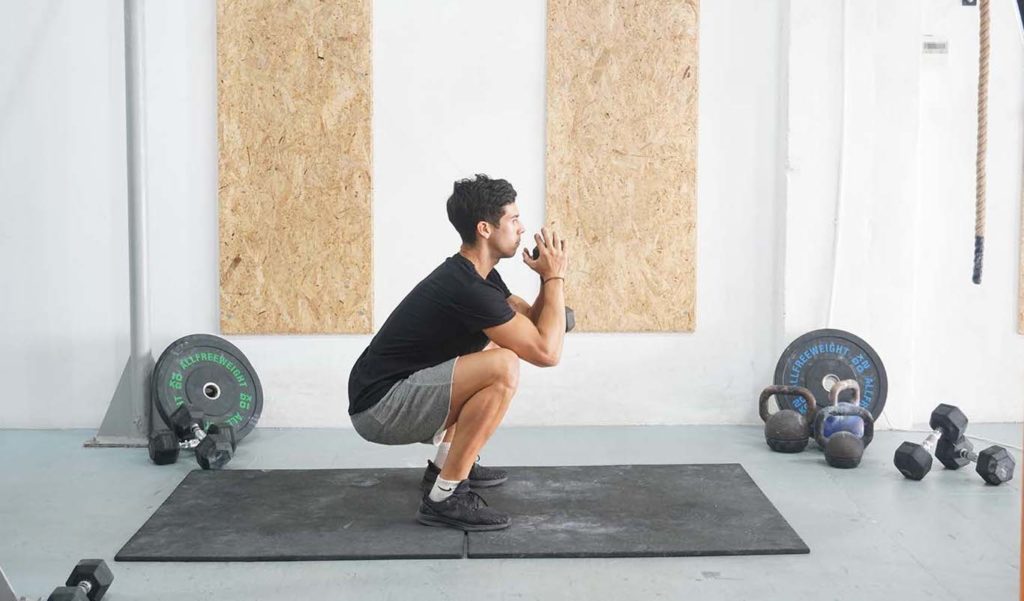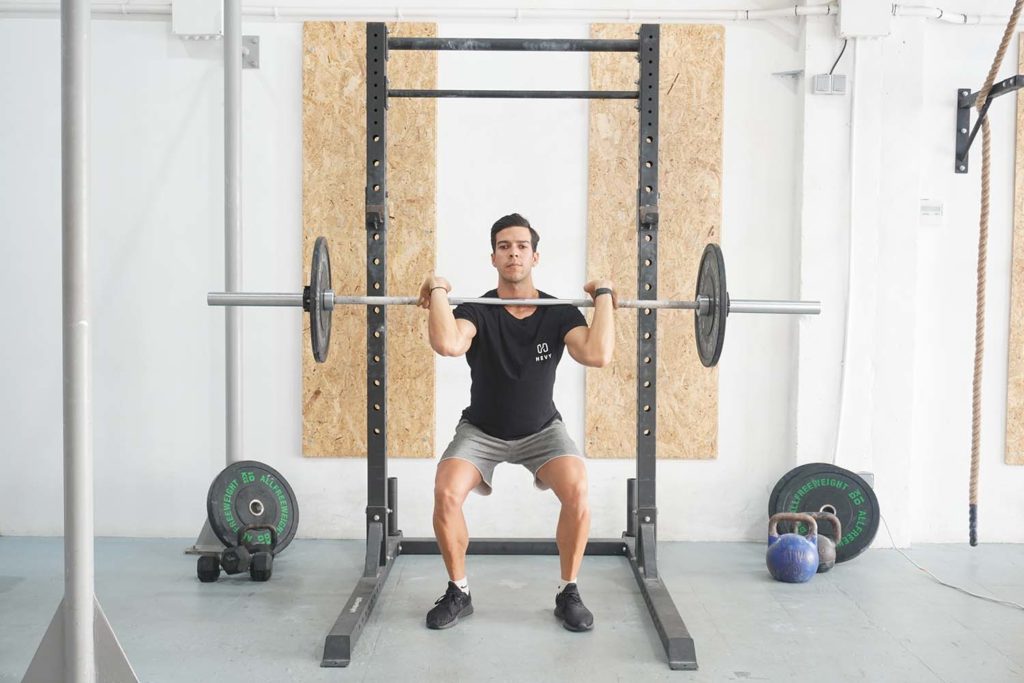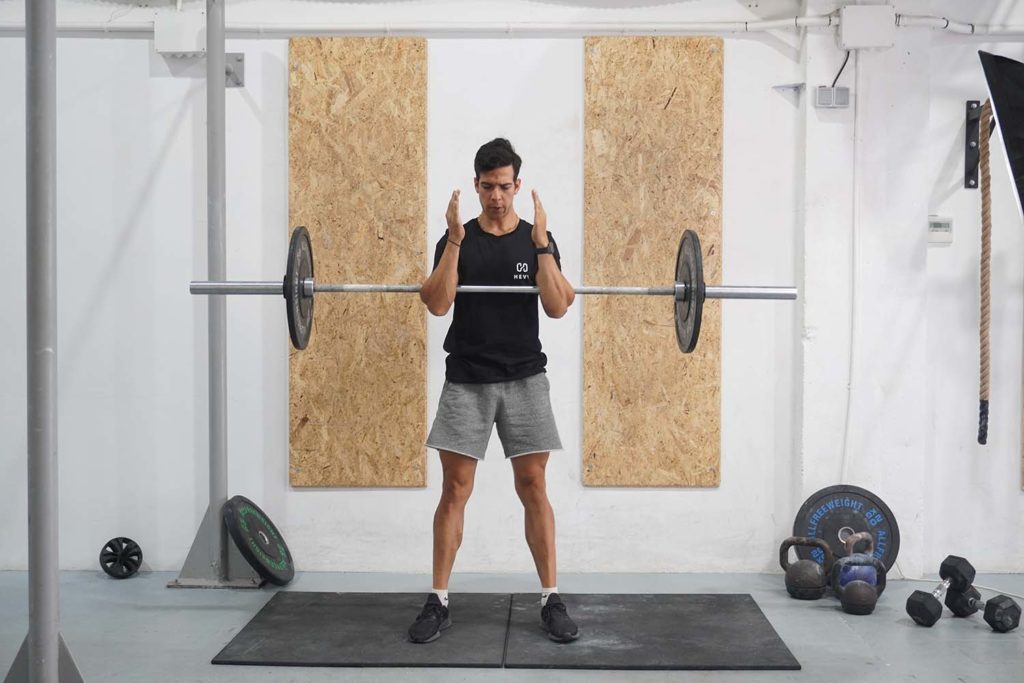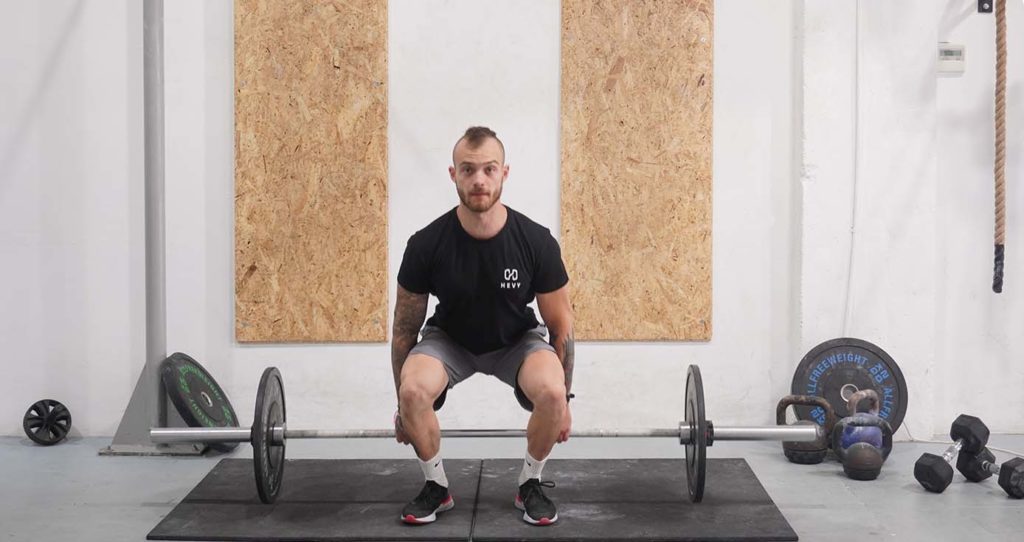Benefits of the Goblet Squat
Goblet squats are a simple and beginner-friendly accessory movement for the lower body. The goal is to hold a dumbbell or kettlebell in front of your chest as you squat. Doing so resembles front squat mechanics, allowing you to engage your quadriceps better and work your upper back. Aside from building lower body strength, goblet squats strengthen your core and improve your stability, benefiting your daily life and sports performance.
The goblet squat is also beneficial because it offers a good overloading potential. Beginners can start with a 10-pound dumbbell and gradually progress to 70, 80, even 100 pounds. Plus, goblet squats offer more freedom because you don’t have to wait for a squat rack to free up. All you need is a dumbbell and some room. As an accessory exercise, we recommend including the goblet squat earlier into your training––for example, as a second or third movement.
How to do a Goblet Squat
- Grab a moderately-heavy dumbbell and raise it in front of your torso with both arms while keeping it in a vertical position (with one side up).
- Position your hands to the sides of it with your palms placed firmly underneath the weight plates to prevent it from slipping through.
- Make sure that your back is neutral, and take a deep breath into your belly.
- Descend into a squat by breaking at the knees as you ensure that your torso remains as upright as possible. The goal here is to keep the weight directly over the center of gravity (the middle of your feet), preventing you from losing balance.
- Squat as comfortably as you can – ideally until your thighs are parallel with the floor.
- Push through your heels to raise yourself back to the starting position and exhale near the top of the repetition.
- Take another breath and squat again.
- Once you finish the set, carefully lower the dumbbell to the floor as you keep a firm grasp with both hands.
What muscles does a goblet squat activate?

The primary muscle group that works during goblet squats is the quadriceps, which cover the front side of our thighs (1). Our quadriceps’ primary function is knee extension, as we ascend from the squat position (2). But the muscle group also works when we descend on each repetition. Assuming a wider stance can also lead to significant adductor and gluteal activation. Like all squat variations, goblet squats involve our hamstrings but to a small degree. The muscle group mostly functions to provide some stability at the knees and hips.
Goblet squats are also beneficial for the upper body. Holding a weight in front of your chest forces a more upright torso, which means your upper back works hard to keep you in position. Your rhomboids, trapezius, infraspinatus, erector spinae, and latissimus dorsi engage significantly to keep you upright. The biceps and shoulders also work in holding the weight.
Your midsection musculature flexes isometrically to provide torso stability during goblet squats. The rectus abdominis, transverse abdominis, and obliques activate to provide support during the movement.
The Difference between a Squat and a Goblet Squat
Classic squats and goblet squats are similar in many ways. The ranges of motion are identical, both movements offer a solid overloading potential, and you train many of the same muscles. But despite their similarities, goblet and classic squats are also different in some significant ways.
The most notable difference between the two exercises has to do with how you support the weight. With classic squats, you’re using a barbell for loading and are supporting it on your upper back. Thanks to the position, you can lean your torso forward and allow for a more significant contribution from your hip extensors (glutes and hamstrings) (3).
In contrast, goblet squats force you to support the weight in front of your chest, which means you have to maintain a more upright torso. As a result, your quadriceps do more work, and hip extension occurs at a much smaller degree. Goblet squats also force your upper back musculature to engage more and keep you in position.
Both movements are fantastic, and you should include them in your training. For example, classic squats can be your primary leg exercise, and goblet squats can be an accessory exercise for quadricep growth.
Variations and Modifications of the Goblet Squat
1. Sumo Goblet Squat
The sumo goblet squat is a variation where you assume a wider stance. In doing so, you can better engage your adductors (inner thigh muscles) and glutes. A wider stance can also be beneficial for taller lifters who struggle to engage their quadriceps effectively.
2. Tempo Goblet Squat
Tempo goblet squats are an excellent variation you can use to challenge yourself without adding more weight. The goal with the movement is to lower yourself and get back up more slowly, increasing time under tension and making each repetition more difficult.
3. Goblet Squats with a Pulse
Adding a pulse at the bottom of a goblet squat makes the movement more challenging. Squat to the bottom position, but instead of going back up, pulse a couple of times. Move your buttocks an inch or two up and down, then squat up.
Mistakes to Avoid
A common mistake with goblet squats is leaning your torso forward and putting a lot of your weight on your toes. Doing so is bad because it can lead to loss of balance. Instead, you should sit back, supporting yourself on your heels.
Another mistake with goblet squats is shortening the range of motion. The error typically results from too much weight, but it could also be due to poor mobility. You should squat down until your thighs are parallel with the floor and move up, fully straightening your legs.
The third significant mistake related to goblet squats is holding the dumbbell or kettlebell too far forward. Doing so isn’t necessarily bad, but it makes the movement more difficult than it has to be. Have the weight close to your body. You can even place it against your chest and press it into position by having your palms face the ceiling.
Similar Exercises to the Goblet Squat
Front Squat

The front squat is a compound exercise in which you place a barbell over your shoulders and support it with your hands (front rack position). Like goblet squats, keeping the weight in front of your body reinforces a more upright torso and greater quadricep activation (4).
Zercher Squat

Zercher squats are a variation where you support the barbell at the crease of your elbows. Like front and goblet squats, the position forces you to maintain a more upright torso and emphasize your quadriceps.
Hack Squat (Barbell)

The barbell hack squat is a less known but effective movement for whole-body strength. To do the movement, you have to stand in front of a barbell, squat down, grab it with both hands, and stand up. Once in position, begin doing squat repetitions. Aside from building your leg strength, the hack squat strengthens your grip.
